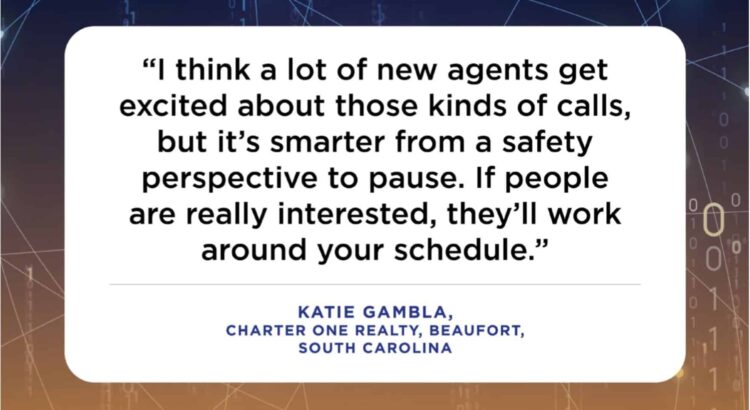There are people who can visualize a space, and then there are others who cannot. Selling a property that hasn’t been built yet is even more challenging. Buyers usually have to rely solely on floor plans, and for those who aren’t visionaries, this can be a challenge.
But this situation isn’t just limited to new construction; it’s for every property we sell. Most people find the property online before deciding whether to see it. Providing a 3D floor plan where buyers can virtually immerse themselves into the space is key to securing that in-person viewing.
Why you should be using 3D floor plans:
We all know that having a floor plan is essential if you want to increase the number of prospects for your listing.
A two-dimensional floor plan is a flat, perspective- and depth-free blueprint, AutoCAD drawing or diagram. A 3D plan, on the other hand, depicts the building’s layout with height, depth and perspective. This immersive technology, along with some virtual staging, enables customers to visualize themselves living in that space by including distinct furniture pieces to provide a sense of comfort and warmth to the interiors.
In addition, using 3D floor plans can also:
- Aid in making your listings stand out.
- Aid in making YOU stand out to win more listings.
- Offer a true-to-life visual representation.
- Adapt the space to your preferences.
- Eliminate the need for interpretation.
- Save you the time of wasted showings.
- Enhance the chances of online sales.
If you want to take advantage of all of these benefits, start using 3D floor plans in your marketing.
There are many online companies that can do it for you, but that can get pricey. Or you can do it yourself using online tools like RoomSketcher or Houzz Pro.
Let me walk you through these two amazing 3D floor plan platforms and how useful they can be for your real estate marketing.
1. RoomSketcher and how it works
RoomSketcher is a powerful and user-friendly online floor planner and interior design application that enables users to create virtual designs for their homes. It has a built-in floor design tool that makes it easy to create. It offers many ready-to-use furniture menus, plus access to various design ideas, thanks to templates accessible in its library. Drag-and-drop functionality has been built into the interface across the entire design.
Through RoomSketcher, users can visually walk through interactive 3D floor plans and quickly access a breathtaking 360-degree image of the designed space. It is ideal for developing floor plans in 3D for your listings, and especially for new-construction projects.
Pros
- It creates high-resolution 3D floor plans in PNG, JPG and PDF formats.
- It has over 20 potential floor plan settings available to simplify the process.
- It gives you an authentic “feel” of the layout.
- It allows you to import a blueprint/2D floor plan to trace over.
- It is reliable and effective.
Cons
- There are a lot of features, so getting started can be a bit overwhelming. Start with the free version and go from there.
- The free version is limited, and the Pro version is pricey but offers many features.
- RoomSketcher is not available on phones. It is available only on Macs, PCs, iPads and Android tablets.
Note: You can test out RoomSketcher’s simplicity by using the free subscription’s basic capabilities, which are accessible to all users. For more advanced features, upgrade your subscription. The basic price is $38, and the Pro is $99.
2. Houzz Pro and how it works
Houzz Pro is a comprehensive project-management, marketing and customer-management tool for the design and remodeling industry, but can be adapted for our real estate needs.
Houzz Pro goes far beyond just 3D floor plans and allows users to personalize profiles and marketing settings online to generate leads. In addition, users can use a central project portal to engage with clients, get estimates and find proposal templates — this can be useful for agents who work a lot with developers on new-construction projects.
Pros
- Your clients can experience not only 3D floor plans, but also an augmented-reality tour of their future house.
- It allows you to modify every detail of your design.
- You can manage leads and projects while on the go with the Houzz Pro mobile app that is available for iOS and Android.
Cons
- It has many features, and the learning curve can be a challenge, so start off with the basics.
- The Projects pages can be challenging to edit, but if you are using the program only for 3D floor plans, it is doable.
- The platform still has a few quirks; all the features don’t always appear on some of the pages.
Note: There is a free version available. However, you won’t have access to major features with the free version. Houzz offers three subscription options starting at $65/month for the starter, $99/month for the essential and $399/month for the full-blown version.
The bottom line
Allowing prospects to be able to “feel” the space that they may potentially be buying has really grown in popularity, almost becoming the norm. Get familiar with these tools, and start using immersive technology with 3D floor plans in your marketing strategy. You will be happy that you did. It will generate more leads, sell your listings faster and take your real estate business to a higher level.
Anne Ewasko is a veteran Realtor in the Chicago area and a longtime techie. Visit her at anne.luxhomechicago.com.


